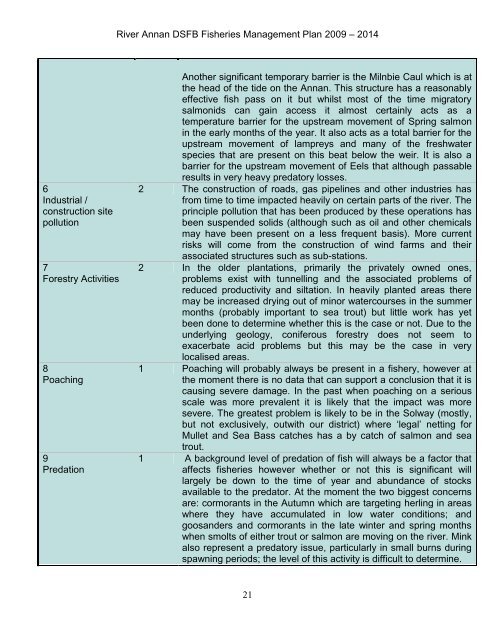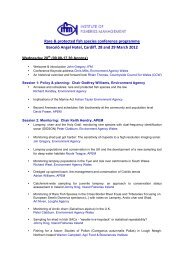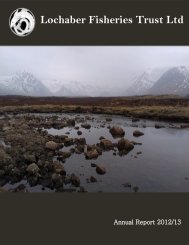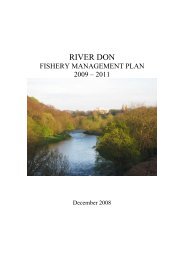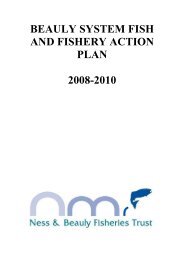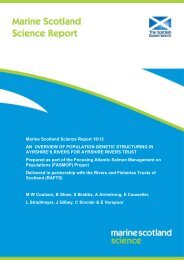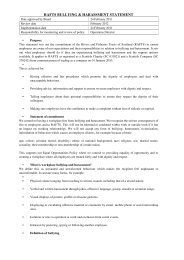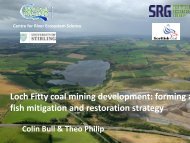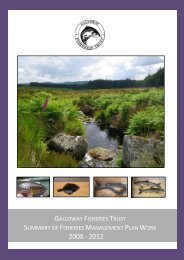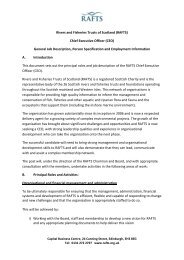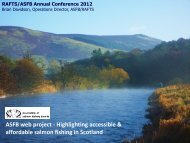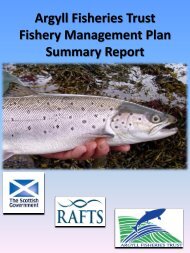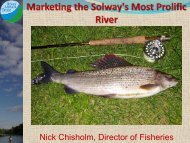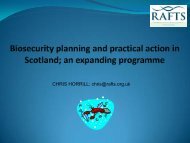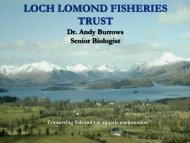Create successful ePaper yourself
Turn your PDF publications into a flip-book with our unique Google optimized e-Paper software.
River <strong>Annan</strong> DSFB Fisheries <strong>Management</strong> <strong>Plan</strong> 2009 – 20146Industrial /construction sitepollution7Forestry Activities8Poaching9PredationAnother significant temporary barrier is the Milnbie Caul which is atthe head of the tide on the <strong>Annan</strong>. This structure has a reasonablyeffective fish pass on it but whilst most of the time migratorysalmonids can gain access it almost certainly acts as atemperature barrier for the upstream movement of Spring salmonin the early months of the year. It also acts as a total barrier for theupstream movement of lampreys and many of the freshwaterspecies that are present on this beat below the weir. It is also abarrier for the upstream movement of Eels that although passableresults in very heavy predatory losses.2 The construction of roads, gas pipelines and other industries hasfrom time to time impacted heavily on certain parts of the river. Theprinciple pollution that has been produced by these operations hasbeen suspended solids (although such as oil and other chemicalsmay have been present on a less frequent basis). More currentrisks will come from the construction of wind farms and theirassociated structures such as sub-stations.2 In the older plantations, primarily the privately owned ones,problems exist with tunnelling and the associated problems ofreduced productivity and siltation. In heavily planted areas theremay be increased drying out of minor watercourses in the summermonths (probably important to sea trout) but little work has yetbeen done to determine whether this is the case or not. Due to theunderlying geology, coniferous forestry does not seem toexacerbate acid problems but this may be the case in verylocalised areas.1 Poaching will probably always be present in a fishery, however atthe moment there is no data that can support a conclusion that it iscausing severe damage. In the past when poaching on a seriousscale was more prevalent it is likely that the impact was moresevere. The greatest problem is likely to be in the Solway (mostly,but not exclusively, outwith our district) where „legal‟ netting forMullet and Sea Bass catches has a by catch of salmon and seatrout.1 A background level of predation of fish will always be a factor thataffects fisheries however whether or not this is significant willlargely be down to the time of year and abundance of stocksavailable to the predator. At the moment the two biggest concernsare: cormorants in the Autumn which are targeting herling in areaswhere they have accumulated in low water conditions; andgoosanders and cormorants in the late winter and spring monthswhen smolts of either trout or salmon are moving on the river. Minkalso represent a predatory issue, particularly in small burns duringspawning periods; the level of this activity is difficult to determine.21


